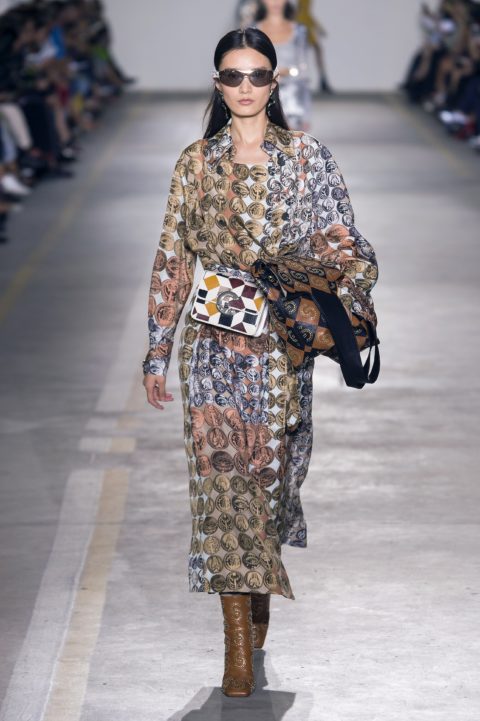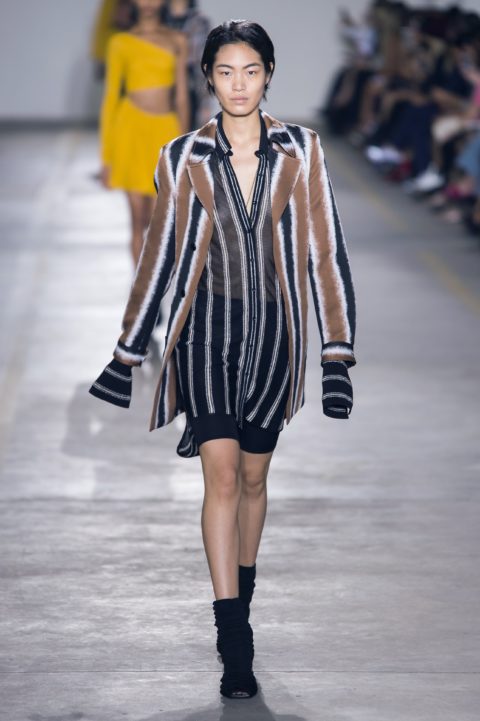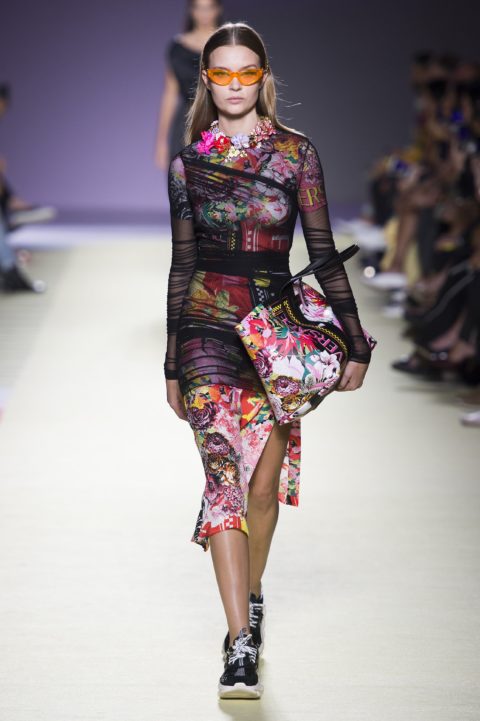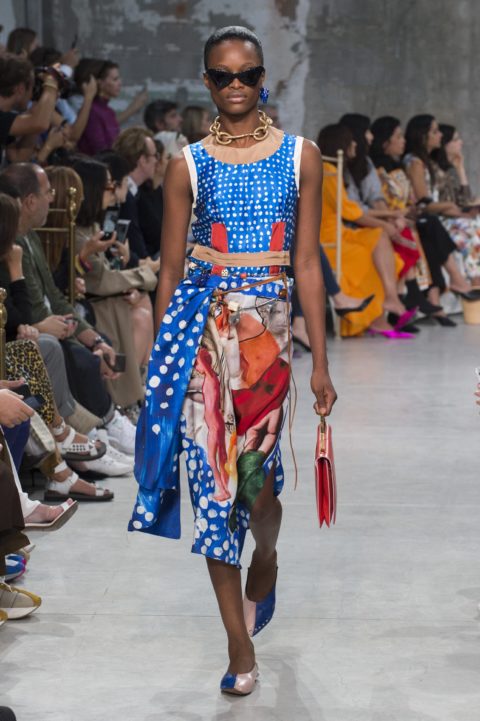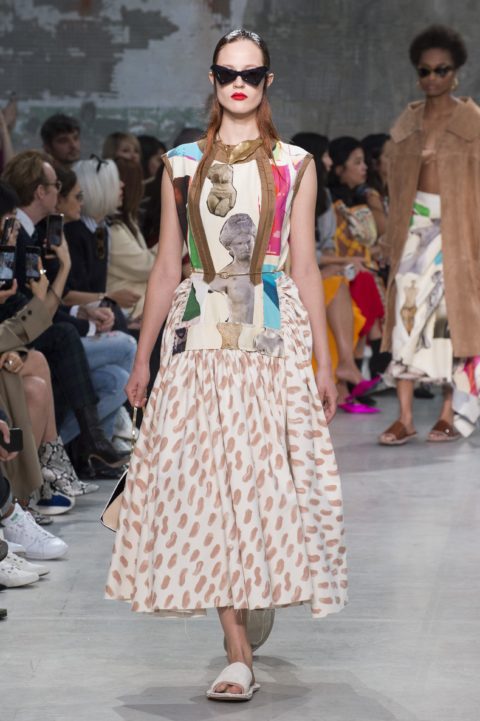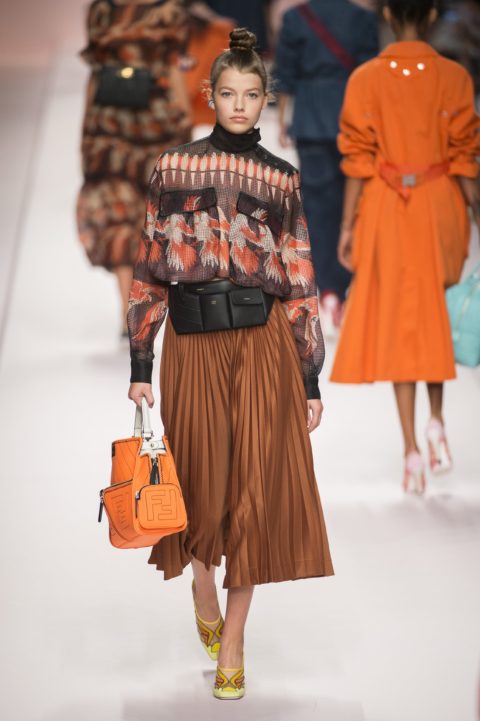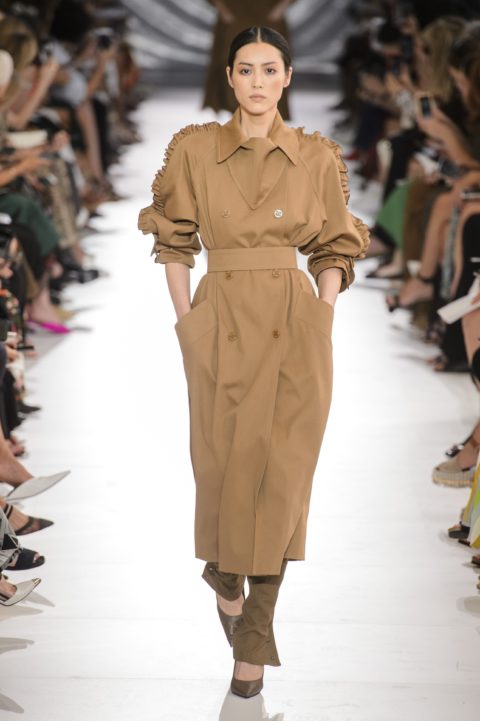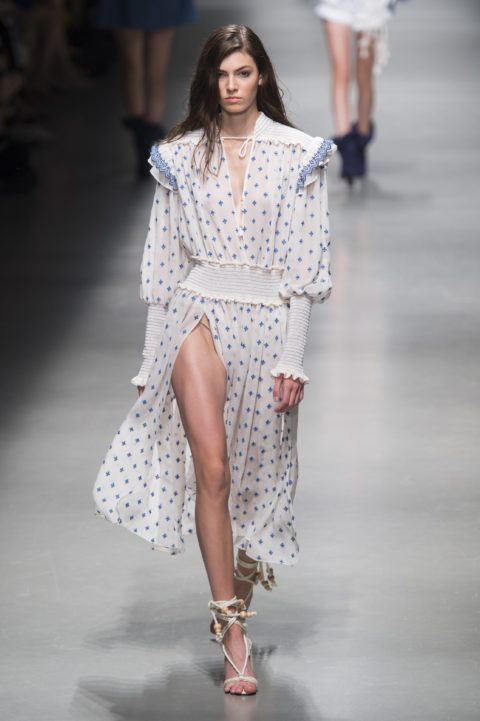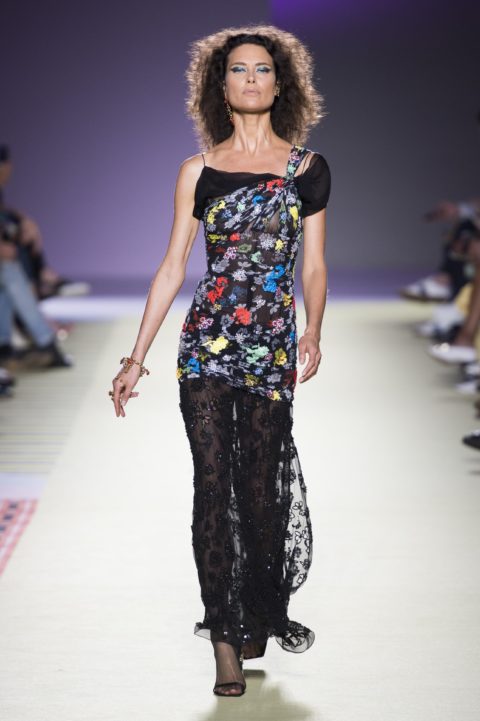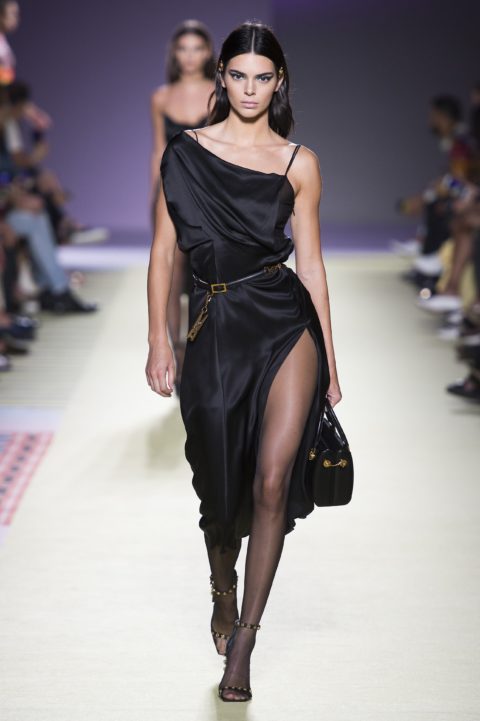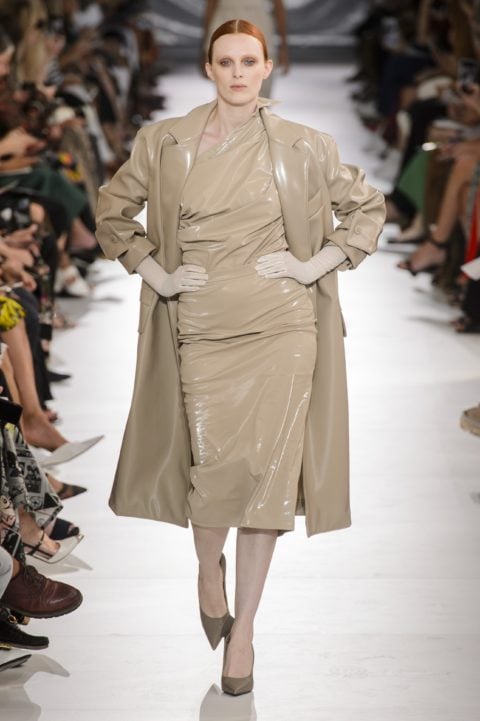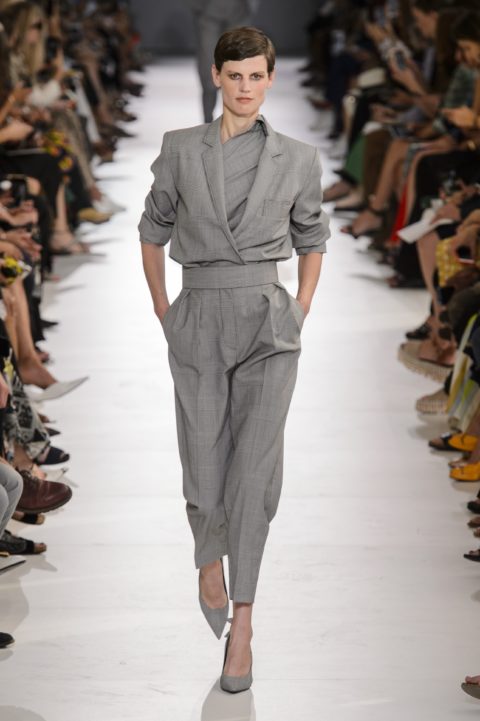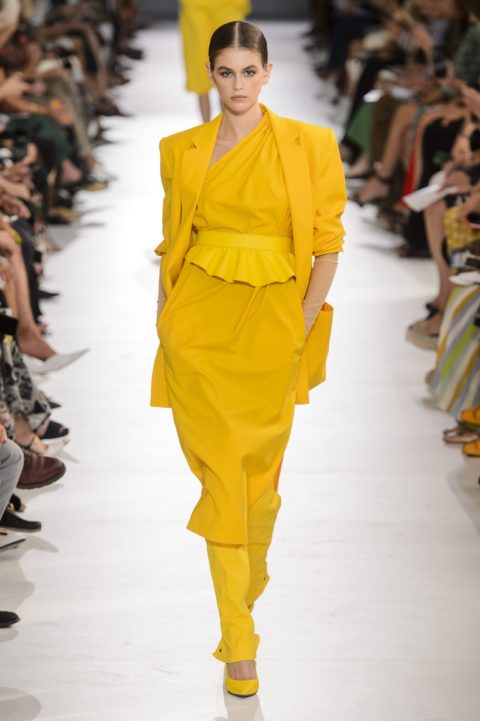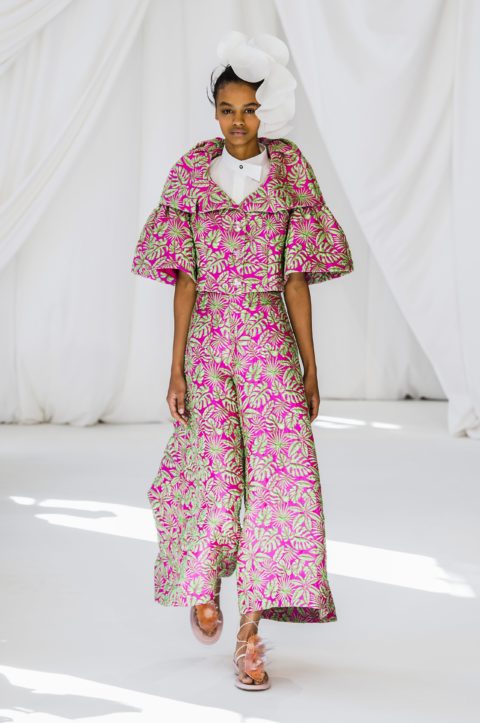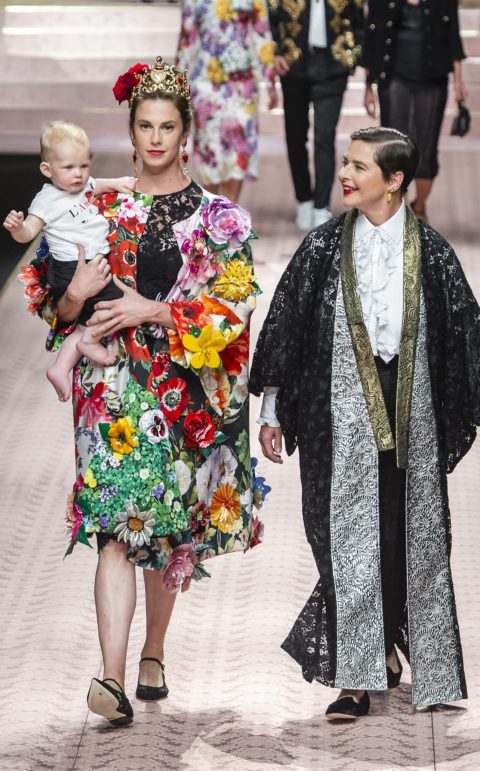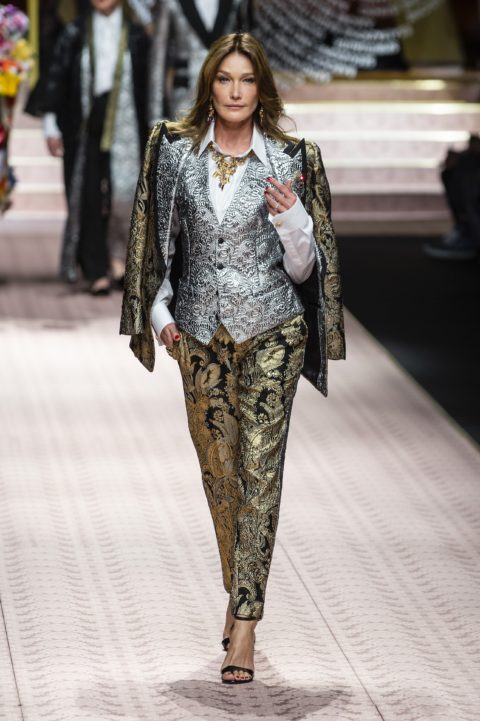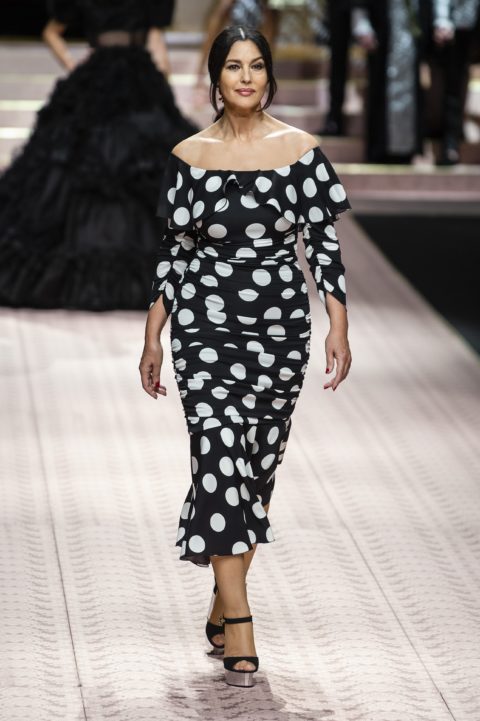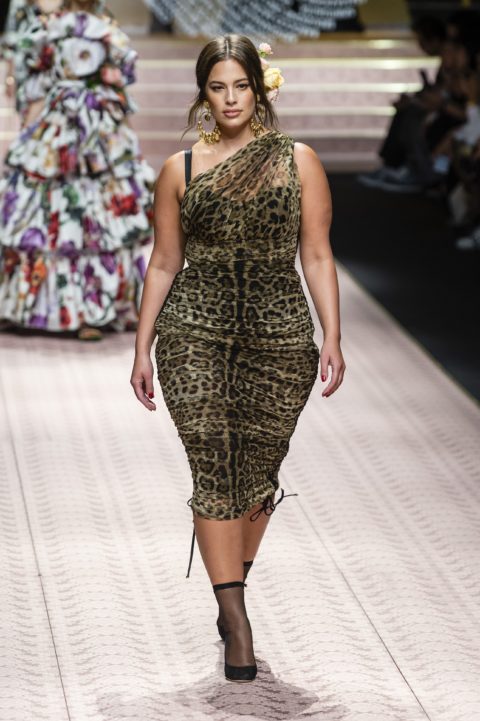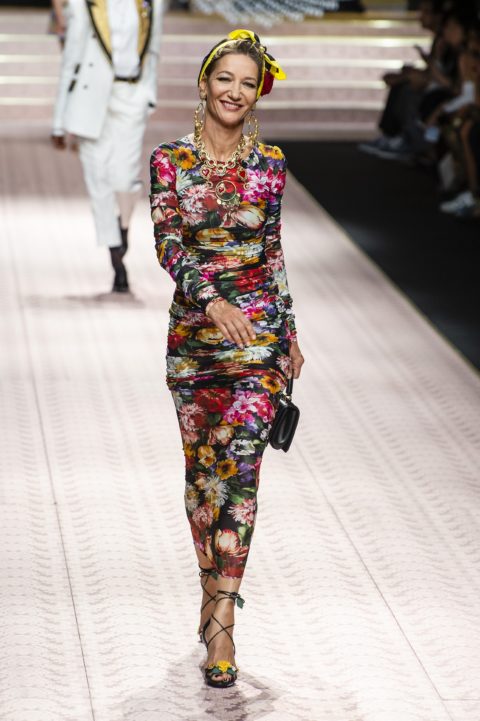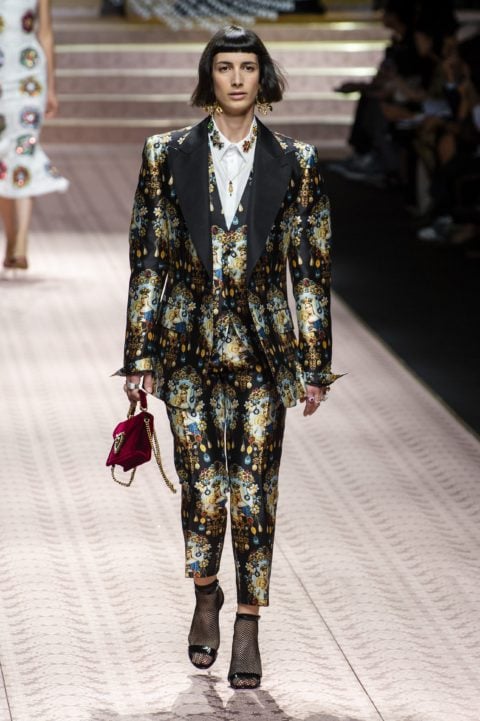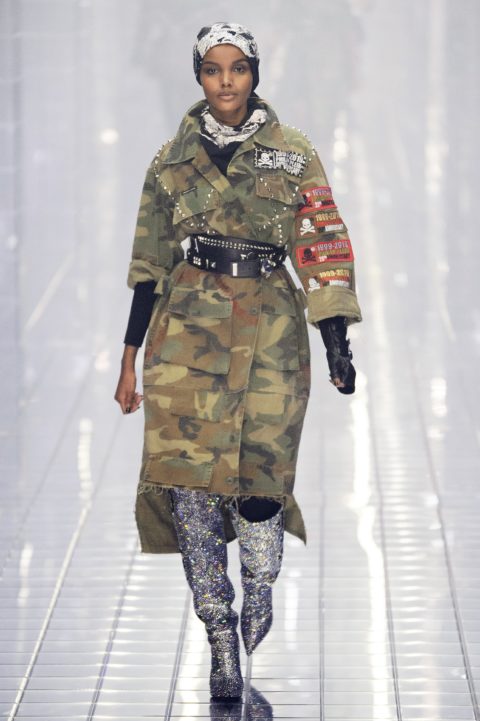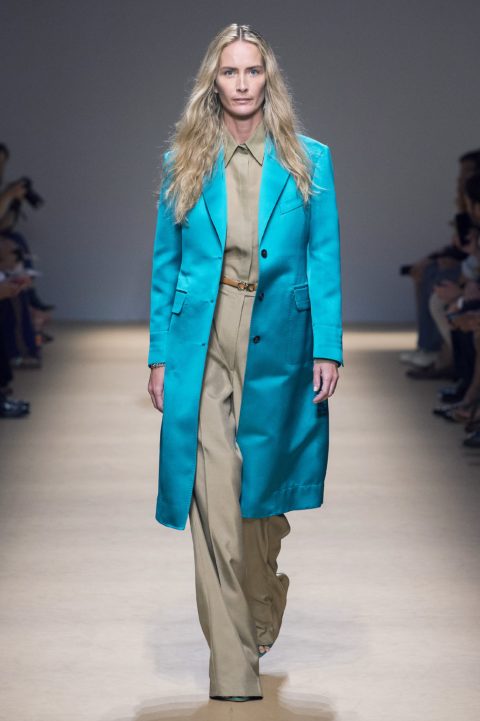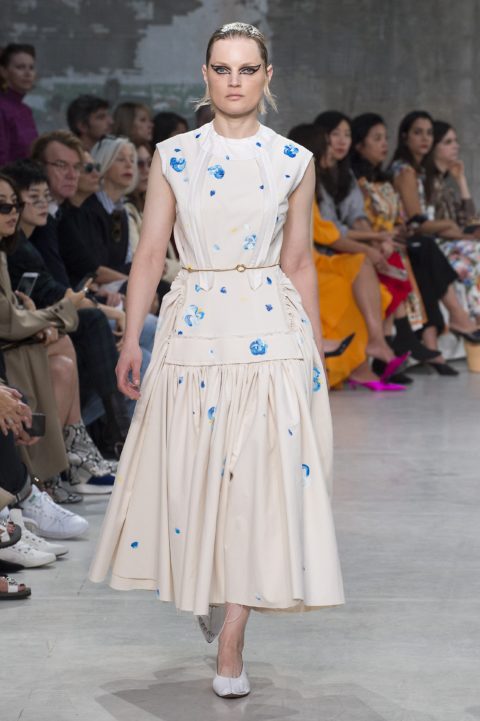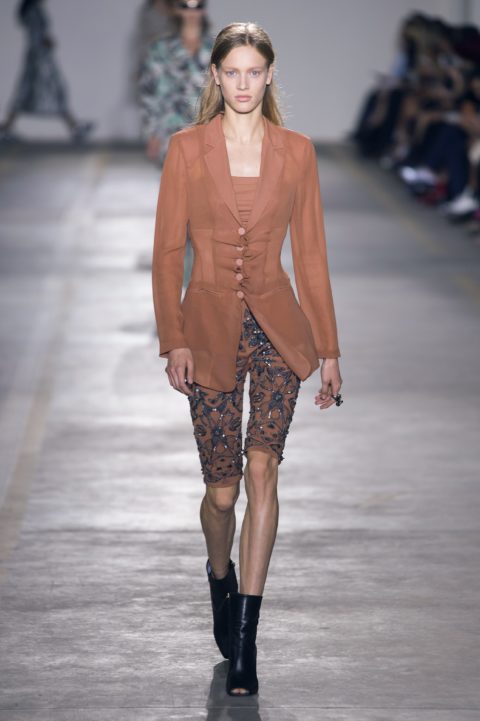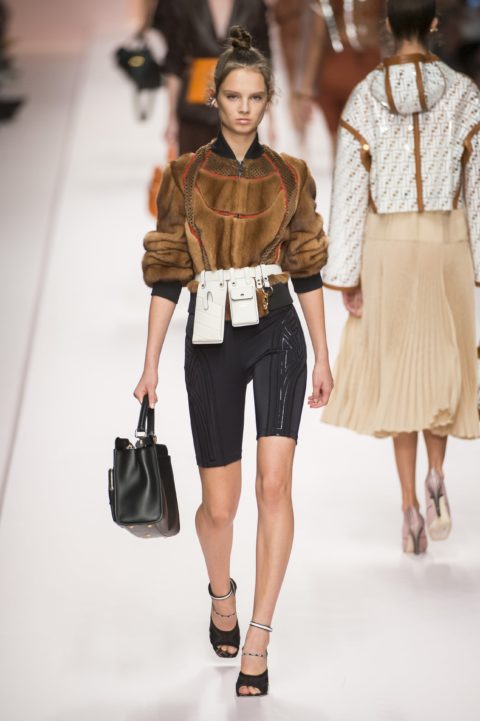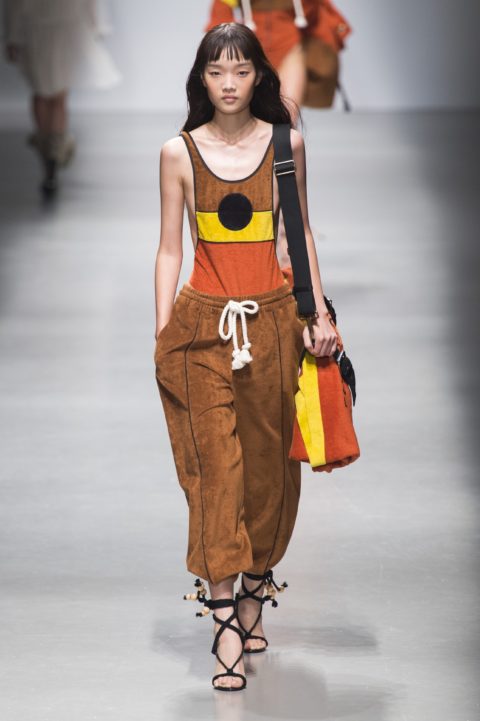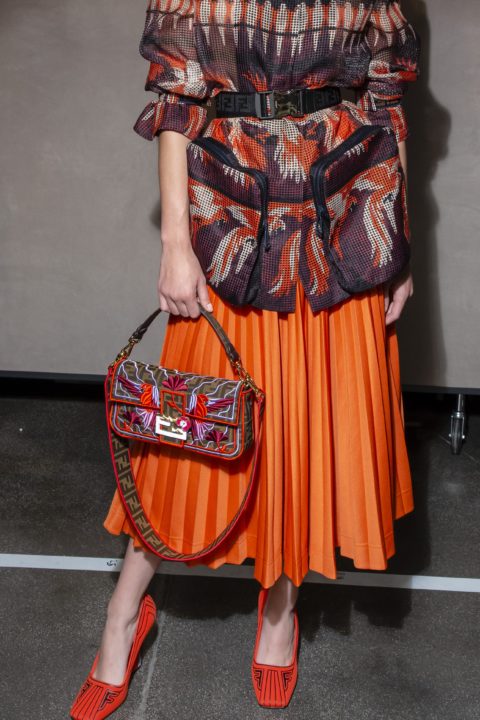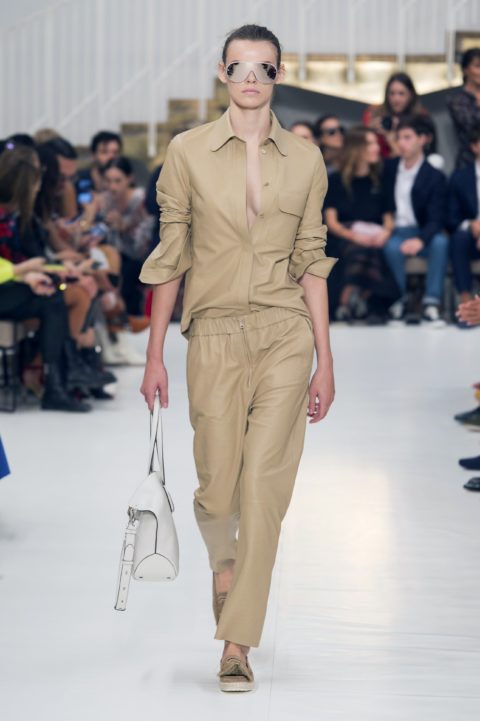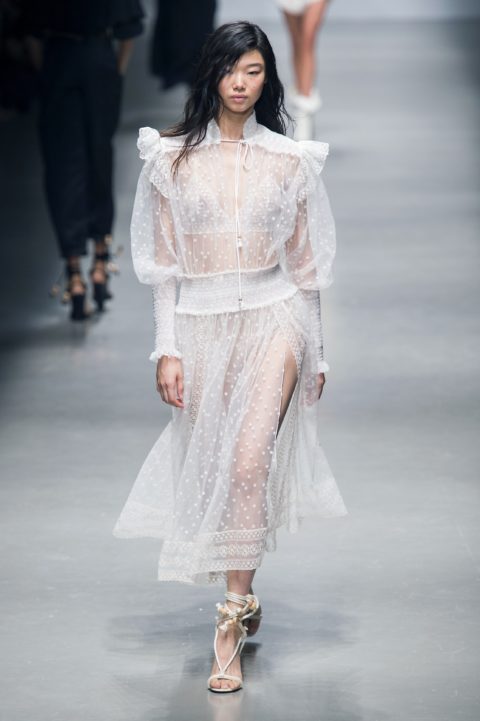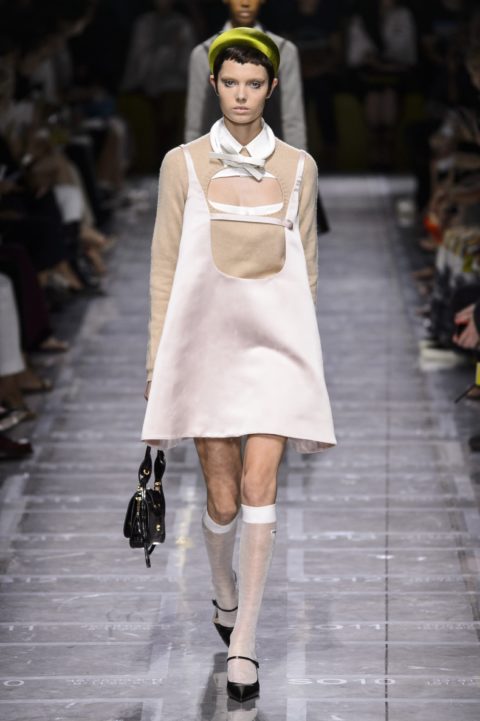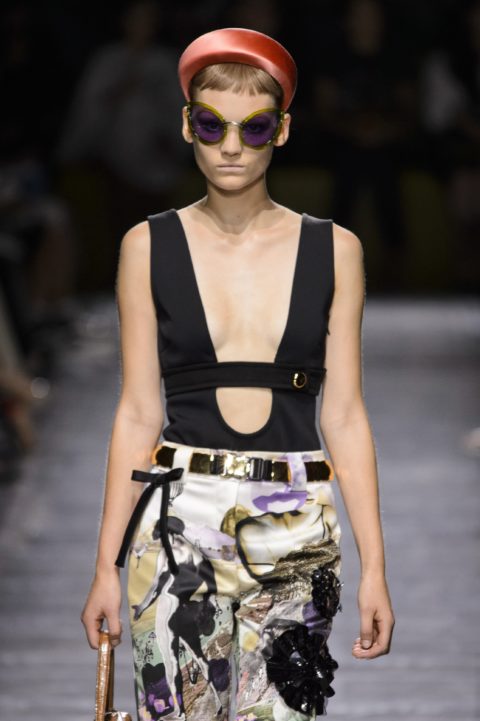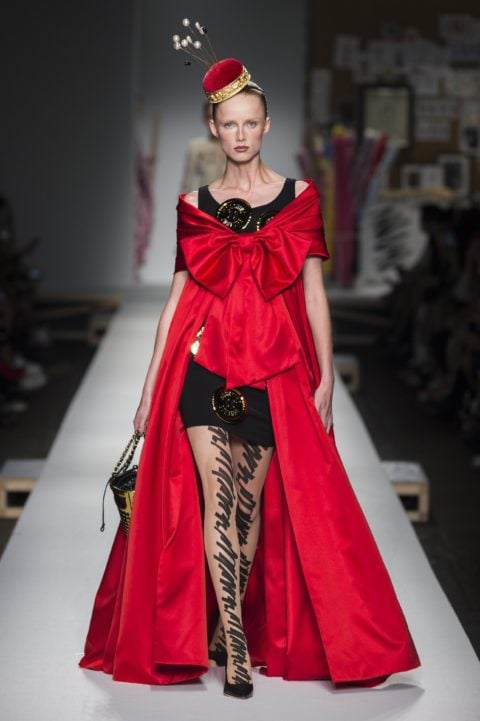Milan Fashion Week Spring 2019: Our Guide to the Best Moods, Moments and Must-Have Pieces
Milan Fashion Week has wrapped! With Gucci and Bottega Veneta not there, it was like having a reunion without two star family members. Then came the news Tuesday morning that Versace might be sold to Michael Kors Holding Ltd. Well, that’s like your Italian sister running off to the States to join her new boyfriend. Family drama aside, the party went ahead, and some notable moods, moments and must-have pieces emerged. Let’s start with the moods.
The mood: refined sensuality and femininity
The film I Am Love had so firmly imprinted a snowy, grey and moody impression of Milan in my mind that I found it disorienting to be here this week under brilliant blue skies and unexpected relenting heat. The fashion, however, was anything but va-va-voom hot. A joyously overt sexuality was replaced by a quieter, refined femininity that was also unexpected—especially at Roberto Cavalli and Versace. Marni, however, has always presented—and, with Francesco Risso, continues to present—clothes that speak to independent, creative neophiles. Risso told the press that his collection, with its sculptural draping, was his idea of “bringing the Venus de Milo back to life—a remote future of dishevelled nymphs, 3-D amazons!” This goddess-like aesthetic is right on trend, according to forecasting guru Lidewij Edelkoort. The noted Dutch visionary has said she expects normcore and streetwear basics to become less relevant as our collective aesthetic shifts toward draping, folding and cuts. She suggests this return to celebrating goddess-like strength in fashion reflects a new view on women’s empowerment. Footnote: One exception to this dialed-back sexuality was seen at Philosophy. Case in point: the black puffy-sleeved romper Bella Hadid wore.
The mood: sustainability (not so much)
London Fashion Week may have focused on the urgency for our industry to address sustainability, but most of the Italian designers didn’t get the memo (150+ looks at Dolce & Gabbana, 170+ looks at Emporio Armani). Max Mara was the notable exception in that it celebrated the idea of buying less but better. Designer Ian Griffiths said his sustainability-minded POV was heightened after watching Sir David Attenborough’s Blue Planet II and reading about Gaia, the OG Mother Earth from Greek mythology. “We see three generations wearing the same Max Mara coat—and it’s still not worn out,” he told Vogue. “Max Mara is about timeless, high-quality clothes. You may not buy a coat every season, but when you do, you keep it and then pass it on.”
The other designer who infused a political sustainable sentiment into her work—as she has done in the past—was Stella Jean. The Haitian-Italian designer did a collab with artisans in the Republic of Benin in West Africa. Her looks—including her signature circle-skirted dresses—were made from organic cotton that has been certified as ethical and sustainable by the European Ecocert SA. The embroidery work was done by Italian artisans.
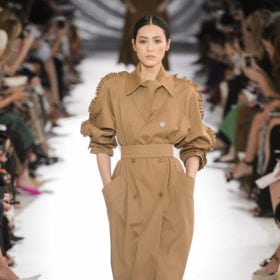
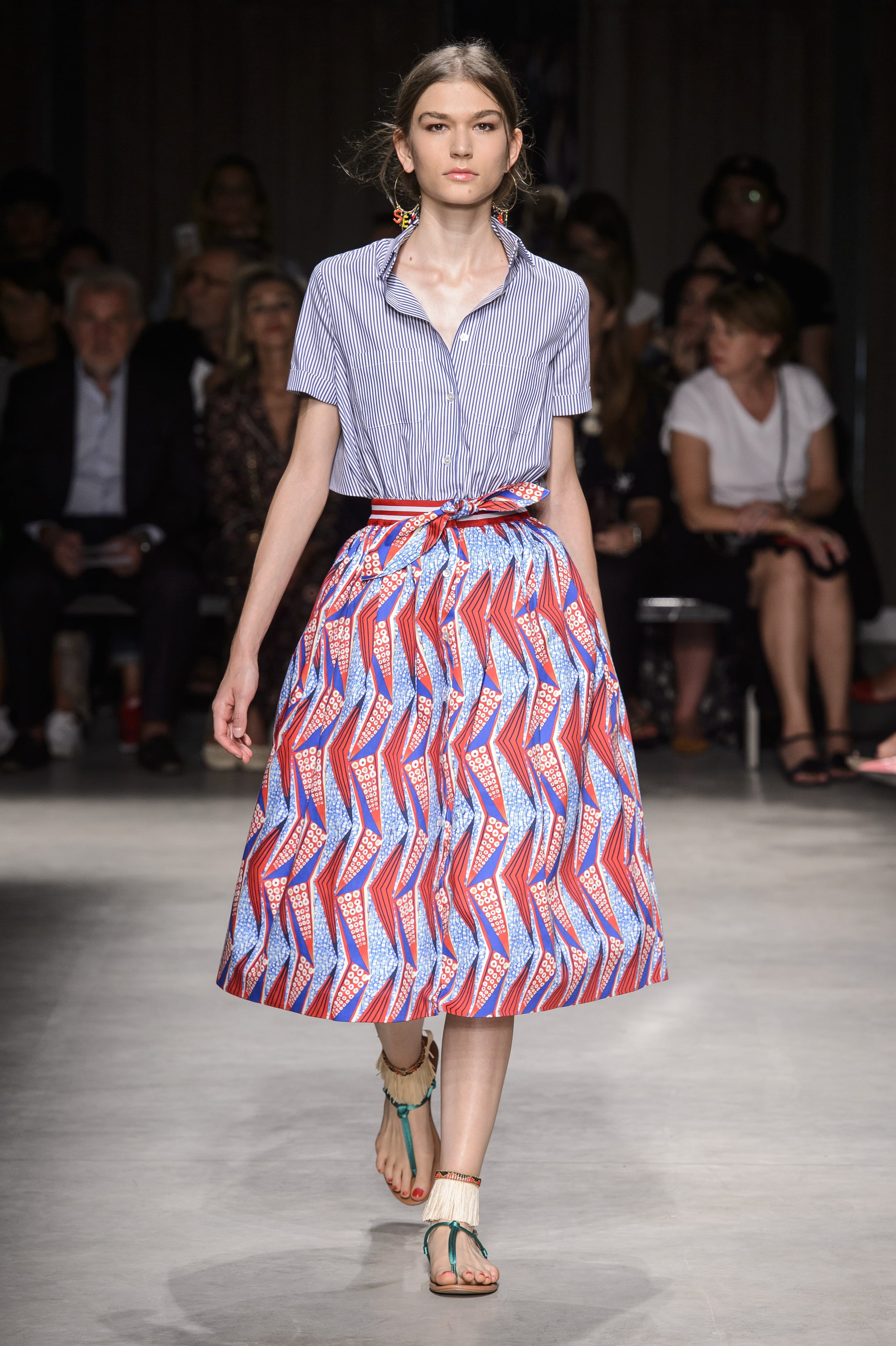
The moments: multi-generational casting
While many designers still had their eye on gen-z and millennials, with star casts that included Gigi and Bella Hadid as well as Kaia Gerber and Halima Aden, some chose to infuse their collections with a grown-up sensibility that required models with storied histories. Perhaps the most historic catwalker to grace the season was Shalom Harlow at Versace. After the other models had walked around the brightly coloured giant square carpeted runway, Shalom appeared wearing a wrapped and draped floral-print long dress. My seatmates—many of whom were over 30—hastily whispered “Is that Shalom?!” to one another. She was a Versace regular back in the ’90s and one of the era’s titans. (Incidentally, the Canadian-born model’s first magazine cover was for FASHION.) With her chin pointed upward and her hair bouncing in her wake, the former dancer captivated the room during her solitary tour of the runway. When she returned for the final round with all the other models, she smiled and burst out laughing when she passed our seats. It was a joyful moment to witness. There was that same kind of joy at Dolce & Gabbana from the moment Monica Bellucci opened the 150+-look show in a form-fitting polka-dot dress. Eva Herzigová came next wearing an iconic OTT fairy tale gown. Carla Bruni appeared in a three-piece silver and gold baroque suit, and Isabella Rossellini was beaming as she walked alongside her daughter, Elettra, and her grandson. Other notables in this show: Helena Christensen, Ashley Graham, Marpessa and a street-cast collection of characters of all ages and gender identities. The theme of this season’s show was DNA, and the intent was to celebrate Italian culture. Another multi-gen show was Max Mara, with Stella Tennant, Karen Elson, Saskia de Brauw and Georgina Grenville. At Marni, American-born model and makeup artist Guinevere Van Seenus joined the seasoned stylish squad.
Must-have pieces that begin with “B”
Biker shorts, beachwear/eveningwear, beige, boho, baby-doll dresses with scooped bodysuits, bows and a baguette.
The post Milan Fashion Week Spring 2019: Our Guide to the Best Moods, Moments and Must-Have Pieces appeared first on FASHION Magazine.
